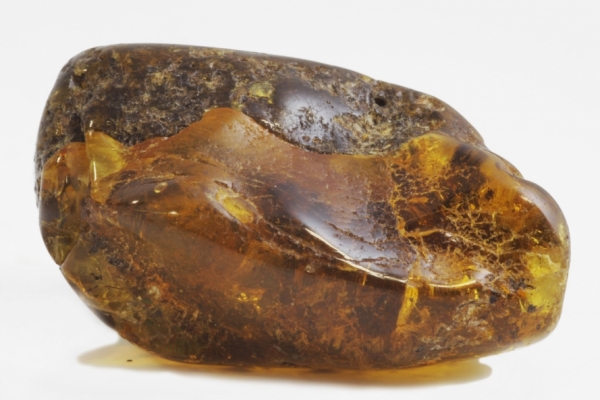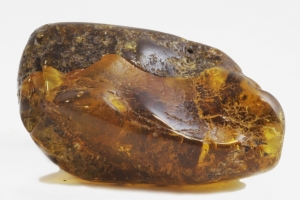
Create a selection
This small translucent orange pebble is amber, a material that has long been treasured for its beauty. It is commonly used in jewellery, and was used in some traditional medicines in Ancient Greece through to the Middle Ages. Amber is produced through the fossilisation of tree resin over many millions of years: the oldest known amber dates back 320 million years. Tree resin contains mostly waste products of the plants physiological processes and its excretion from the tree results in various protective benefits, such as trapping damaging insects. The resin contains a variety of organic molecules that undergo various chemical processes during the fossilisation process, leading to the solid amber. It is common to find insects and animal fragments inside the amber, preserving them perfectly over the millions of years since their entrapment. A small amount of debris can be seen in this small amber sample. Such trapped specimens have contributed to biological and evolutionary research. For example, in September 2011 scientists from Canada published work about their discovery of fossilised bird and dinosaur feathers found inside amber samples. This work had profound implications on our ideas of the evolution of the feather, suggesting feathered dinosaurs may have been much more common than was originally imagined. One way of telling if a piece of amber is genuine is to look at it under a ultraviolet light as real amber fluoresces a ghostly green under UV, but fake amber would not.
Sample ID: 366
Particularities
- Selections
- Categories
- Polymer
- Curiosities
- Fluorescent
- Relationships
- Fluorescent | Fossil | Orange | Precious | Resin
Add materials you find interesting to your own selections.
Use the  button to select a material and get started.
button to select a material and get started.

